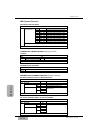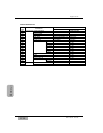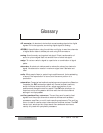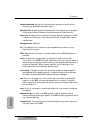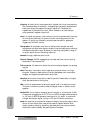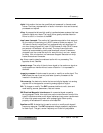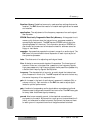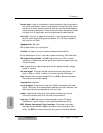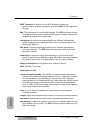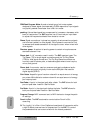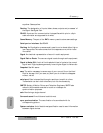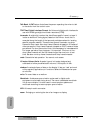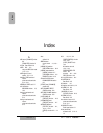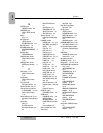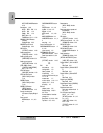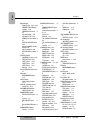
Glossary
DA7 Users’ Guide
Glossary
Glossary-7
MIDI Timecode. An addition to the MIDI Standard to allow the
synchronization of audio equipment, such as the DA7, to MIDI equipped
devices.
Mix. The combination of various audio signals. The DA7 provides an almost
limitless number of ways to combine audio signals. Complex settings can
be saved as “scenes” and recalled later.
mixing bus. An audio mixer where signals from different microphones
and/or preamps are connected and where mixing is actually done. Also
see bus and data bus.
Mix scene. The various settings of the mixer for different requirements
during a production. The DA7 allows the saving and recalling of these
settings in memory.
modulation. A method of varying the frequency or volume of an audio
signal by applying a low frequency signal. Modulation can also be applied
to controls, such as Pan, to create stereo or surround sound effects.
Mono or monophonic. A single source or channel of sound.
MTC. See MIDI Time Code.
Noise Gate. see Gate.
non-drop frame timecode. The method of timecode computation where
there are 30 numerical frames per second of video. “There are 30 frames
of video per second,” you say. Wrong. There are only 29.97 frames of
video per second. In a mathematical hour there would be 108,000 frames
(30 frames per second x 60 seconds x 60 minutes). So, a mathematical
hour of video is 108 frames longer than an hour of reality video. See also
drop frame timecode and timecode.
ohm. A unit of electrical resistance for direct curent or impedance for
alternating current.
output. Signal connections that can be sent or connected to another device.
oscillator. A device that produces a continuous electrical wave or tone.
pan/panning. A method of positioning the sound in a stereo signal from any
point between left and right. The DA7 allows pan control positioning for
each input signal.



